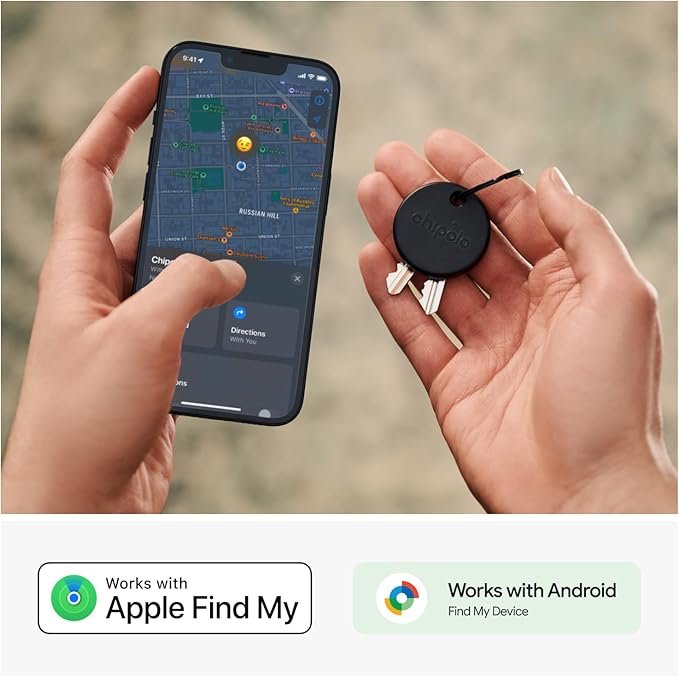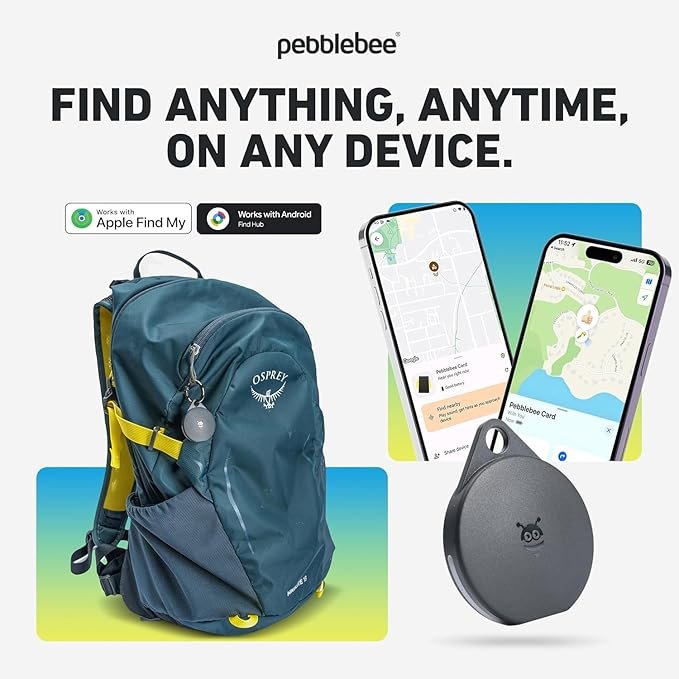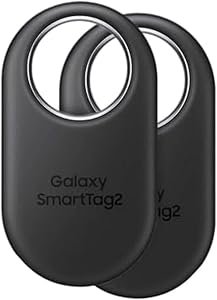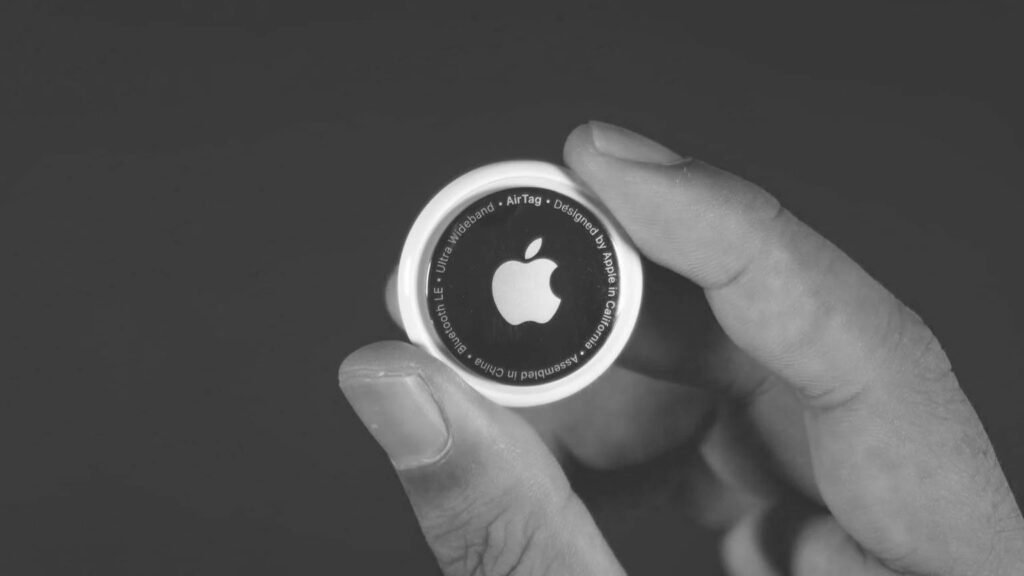Ever had that heart-stopping moment when you can’t find your keys or wallet? You’re not alone. Millions experience this daily, and increasingly, they’re turning to small Bluetooth tracking tags for rescue. By late 2024, over 12% of U.S. broadband households owned at least one smart tag, a significant jump from 7% in 2022. These tiny devices are clearly going mainstream!
But how much do we really know about these tags? How do they work? And are they tracking us? These are great questions. Most of us just stick them on our belongings, see a dot on an app, and call it a day, without truly understanding what’s happening behind the scenes. In this article, I’ll demystify this technology and share everything you need to know. Let’s dive in!
What Is an AirTag?
First, let’s clarify: an AirTag is Apple’s sleek, disc-shaped tracker, roughly 32mm across and 8mm thick, powered by a CR2032 coin battery. Simply snap it to your keys or toss it in your bag. If lost, Apple’s Find My network helps you locate it.
How It Works
AirTags utilize Bluetooth Low Energy (BLE) technology, quietly emitting a small signal (or ‘beacon’) every few seconds. This beacon contains an encrypted ID, a timestamp, and the device’s location. If your iPhone’s Bluetooth is on, it’s constantly and passively searching for these signals. When a nearby Apple device—be it an iPhone, iPad, or Mac—picks up an AirTag’s beacon, it checks the tag’s authentication. If everything is in order, it securely passes this information to Apple’s servers. The AirTag owner can then use the Find My network to locate their lost item. The beauty? No GPS, no SIM card, no data needed—just passive signal relay!
AirTag Security: Encryption & Servers
The beacon IDs I mentioned rotate every 15 minutes, a key feature that prevents malicious tracking and preserves privacy. Furthermore, every data packet is signed by Apple; if it’s not legitimate, your iPhone simply ignores it. Since your phone only sends encrypted location and ID data to Apple’s servers, this process never links to your identity. So, even if your iPhone relays the signal for someone else’s lost AirTag, your privacy is maintained – no one can tell it was your phone. This is also a one-sided communication: your phone only receives authentic signals and sends information to Apple’s servers, it doesn’t send anything to the AirTag itself, making the method highly secure. And here’s the best part: if an AirTag is intentionally used to track you without your consent and travels with you, your iPhone will send you alerts notifying you of an unknown AirTag in your vicinity. Sweet, right? Indeed!
Can a Hacker Fake an AirTag?
Nope. To spoof an AirTag signal, hackers would need Apple’s private signing keys, which are not accessible. Your iPhone’s Bluetooth only listens passively, as mentioned, and the communication is one-sided. There’s no pairing, no open ports, and therefore, no risk of hacking from the AirTag itself.
What About Android?
That’s an excellent question, and a valid concern. Unlike Apple’s closed ecosystem, Android is an open-source platform, which makes it inherently more fragmented and potentially vulnerable. With numerous tracker brands like Tile, Samsung, Chipolo, and hundreds of non-branded options, security can vary widely. To be frank, Android isn’t uniformly secure; some tags might be simple BLE beacons without the crucial ID rotation, making them potential stealth trackers. To address these security concerns, Google launched its Find My Device network in 2024. However, it only allows certified trackers, and ultimately, security still depends on each individual brand.
I’m not here to be an Apple fanboy, but if you’re wondering why Apple’s approach is generally considered safer, here are some key reasons:
- Single Ecosystem: Apple controls hardware, software, and security from end-to-end.
- Strict Standards: Apple enforces features like rotating IDs, anti-stalking alerts, and strong encryption.
- Vast Network: Over 1 billion Apple devices globally contribute to the Find My network, ensuring both effectiveness and security.
Android users, don’t worry! Let’s look at how you can stay secure on Android:
Staying Secure on Android
If you’re using a tracker on Android:
- Choose Google-certified tags only (e.g., Chipolo ONE Point, Pebblebee) that offer rotating IDs and anti-stalking alerts.
- Enable Unknown Tracker Alerts in your system settings. This is crucial for your safety.
- Avoid cheap, unbranded tags. While they might save you a few dollars, the security risks simply aren’t worth it.
- Keep your phone’s OS and Bluetooth firmware updated. This might seem basic, but it’s fundamental to phone security!
- Limit software permissions. For example, disable background tracking for unfamiliar tracker apps.
To help you make an informed choice, here are some recommended Android-friendly tags that are currently leading the industry in security and performance:

Chipolo ONE Point: Features rotating IDs and anti-stalking capabilities, fully compatible with Google’s Find My Device network.

Pebblebee Clip/Card: Rechargeable, Google-certified, and known for its loud alarm and precise tracking.

Samsung SmartTag2: Works seamlessly, especially within the Samsung Galaxy ecosystem.
Wrapping Up
So, to wrap up our discussion: smart tags are now ubiquitous, used by millions daily. But with great convenience comes responsibility. If you’re in the Apple ecosystem, AirTag offers a highly secure, privacy-first, and user-friendly experience. For Android users, the landscape is improving with Google-certified tags and enhanced security features—but choosing wisely remains paramount.
I hope this article, by explaining concepts like BLE, encryption, and passive listening, empowers you to make informed, confident decisions about these devices. After all, tech should be fun, not scary. Happy tracking!
![]()

